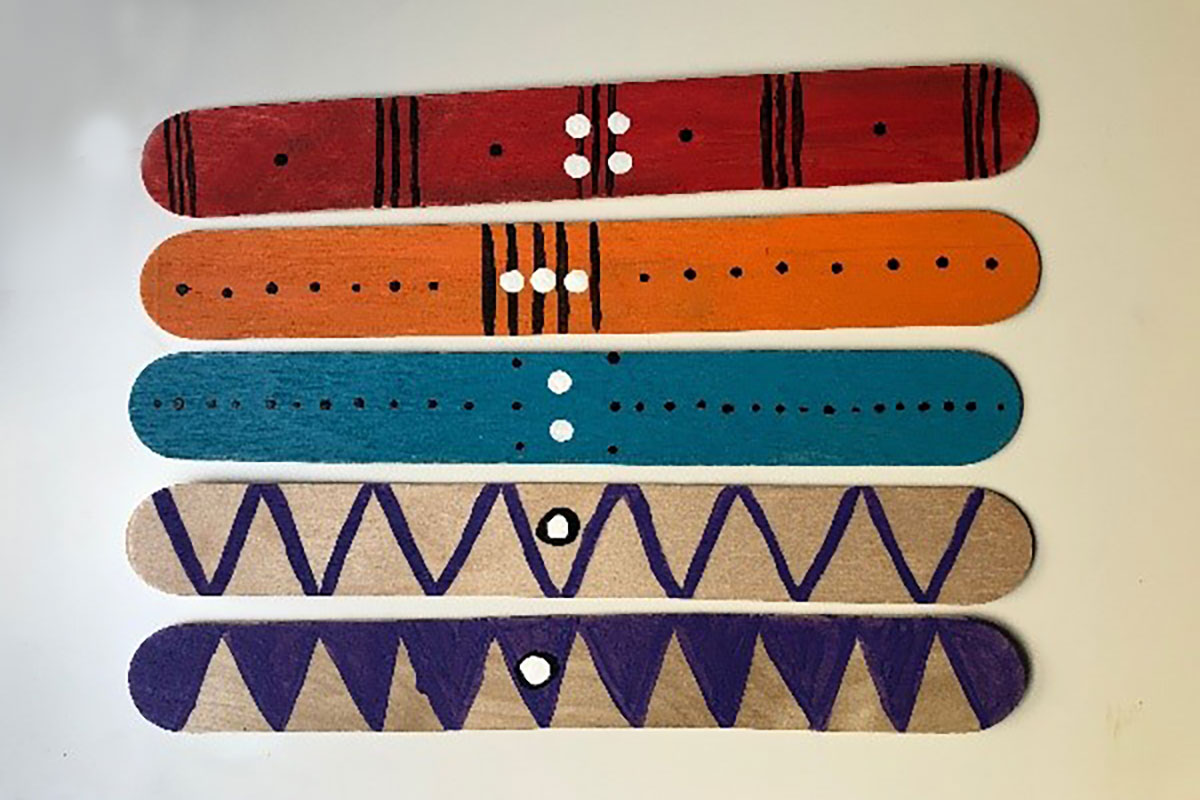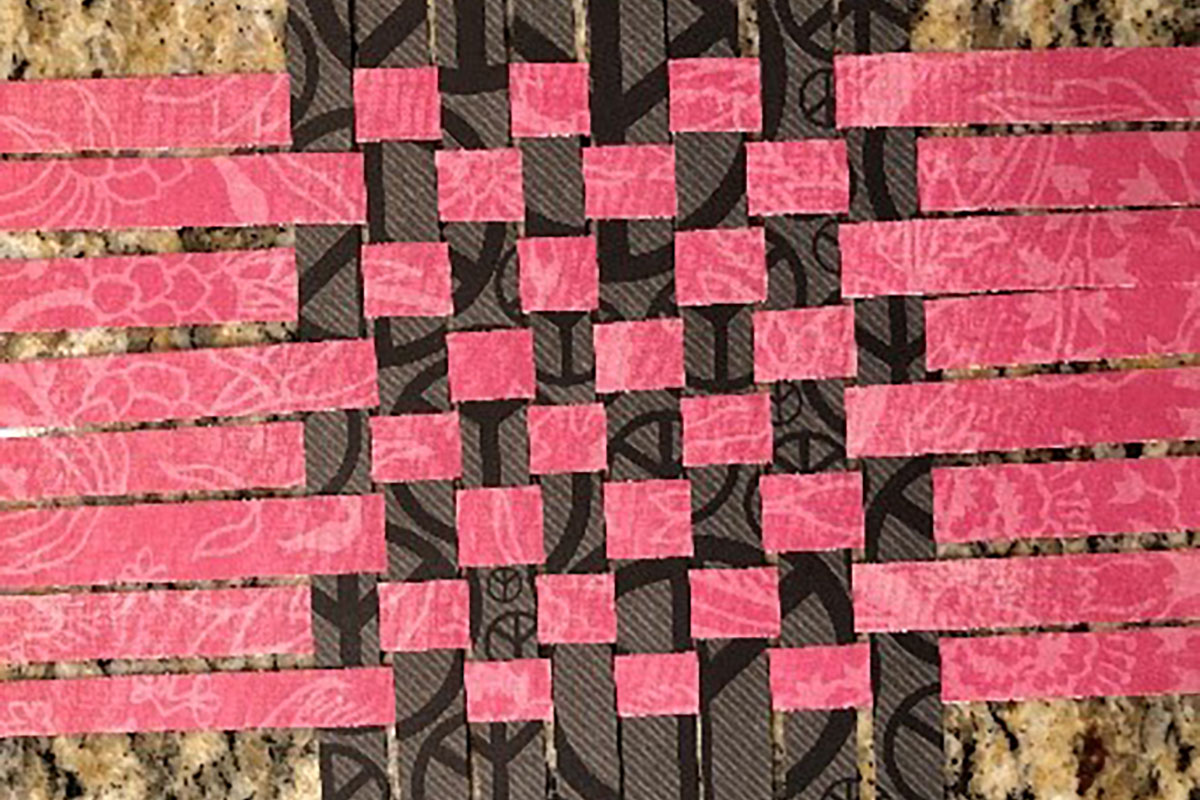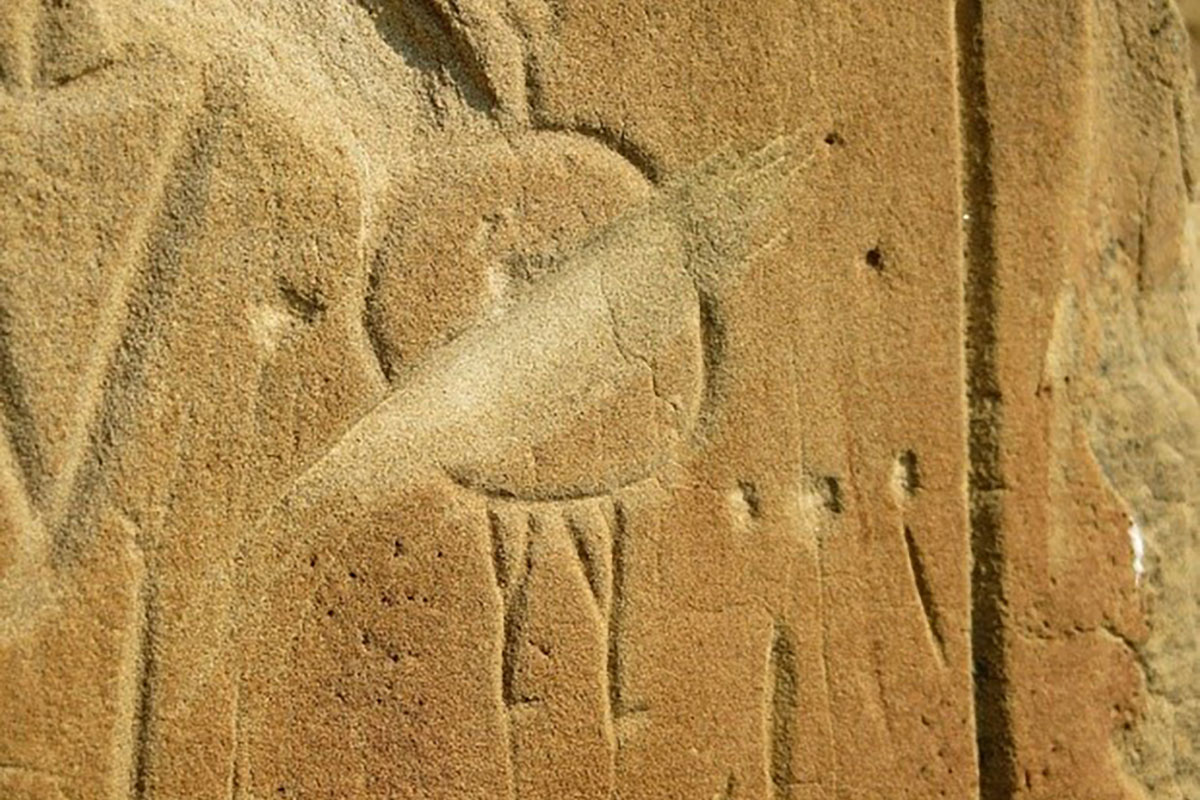Treaty 7 - day 2 Blackfoot Confederacy
Understanding more about an Indigenous people who have lived here for as long as anyone can remember.
These activities can be done alone, but work best with one or more friends on a video chat like Skype, Zoom, Facetime, etc.
Grades K-3
Grades K-3
Mindfulness Activity
Trivia question: What is Diamond Willow?
a) A type of jewelry
b) A type of tree
c) A dog’s name
Mindfulness activity:
- Put both palms together in front of your chest.
- Push your palms together as hard as possible.
- Count to 15.
- Which muscles can you feel? What do your muscles feel like when you push your hands together?
Bone Game
Supplies:
- 5 "Bones" (Large tongue depressors or popsicle sticks work. You can also cut out cardboard)
- Markers and/or paint
Traditionally, this game was played with carved buffalo rib bones and was important in helping Blackfoot children learn to add and count.
Have your child decorate the "bones" with patterns like in the picture, or get creative and adapt it to your child's age.
The white dots on the "bones" represent points. You can have them make their own design and add dots or symbols for counting.
How to play:
- Take turns throwing the “bones” on the floor in front of you.
- Count the number of dots or symbols you can see, then give the “bones” to the next player.
- The first person to 20 points, wins the game. Blank sides count as 0.

*Photo taken by Calgary Neighbourhoods
Blackfoot Territory Stretch
Bend over and touch your toes. Traditional Blackfoot territory stretches all the way south to the Yellowstone River.
Now, stand up and bend your body to the left. Traditional Blackfoot territory stretches east to Manitoba.
Now, reach your hands as high as you can. Traditional Blackfoot territory stretches north all the way to the North Saskatchewan River.
Now, stand tall and bend your body to the right. Traditional Blackfoot territory stretches all the way west to the Rocky Mountains.
Paper Weaving
Supplies:
- Paper (use coloured paper if you have it, or colour white paper with markers)
- Stapler or glue
- Scissors
Weaved baskets were created for a specific purpose. They were used in the gathering, storing, washing and preparing food. Baskets were also used to store non-food items.
Some baskets were very sturdy and were used to carry large loads. Some baskets were woven out of very flexible materials so they could be folded up. Some were lined with pitch to make them waterproof.
- Help your child make 8 strips of ½ inch wide by 11 inch long paper. Lay them side by side vertically.
- One at a time, weave in the other 8 strips of paper horizontally (guide the paper under one strip, over the next and under again until you reach the end).
- Staple the ends of each side together (6 strips at a time).
- Staple handles to the 4 corners.
Talking points to ask your child during the activity:
- What do you think baskets in Alberta or Treaty 7 land were made from? (sweet grass, pine needles, willow, cedar)
- How old do you think the oldest basket on record is? (Over 8000 years)

*Photos taken by Calgary Neighbourhoods
Review Questions
Ask your child:
- How does it feel to try traditional Blackfoot activities?
- Why do you think Blackfoot kids did these crafts and played these game?
- What other games and activities do you think Blackfoot kids traditionally played?
Mindfulness Trivia answer
Trivia answer: b) A type of tree that Treaty 7 people use for construction of their sweat lodges, medicines and basket weaving.
Grades 4-6
Grades 4-6
Mindfulness Activity
Trivia question: What is Diamond Willow?
a) A type of jewelry
b) A type of tree
c) A dog’s name
Mindfulness activity:
- Put both palms together in front of your chest.
- Push your palms together as hard as possible.
- Count to 15.
- Which muscles can you feel? What do your muscles feel like when you push your hands together?
Bone Game
Supplies:
- 5 "Bones" (Large tongue depressors or popsicle sticks work. You can also cut out cardboard)
- Markers and/or paint
Traditionally, this game was played with carved buffalo rib bones and was important in helping Blackfoot children learn to add and count.
Have your child decorate the "bones" with patterns like in the picture, or get creative and adapt it to your child's age.
The white dots on the "bones" represent points. You can have them make their own design and add dots or symbols for counting.
How to play:
- Take turns throwing the “bones” on the floor in front of you.
- Count the number of dots or symbols you can see, then give the “bones” to the next player.
- The first person to 20 points, wins the game. Blank sides count as 0.

*Photo taken by Calgary Neighbourhoods
Paper Weaving
Supplies:
- Paper (use coloured paper if you have it, or colour white paper with markers)
- Stapler or glue
- Scissors
Weaved baskets were created for a specific purpose. They were used in the gathering, storing, washing and preparing food. Baskets were also used to store non-food items.
Some baskets were very sturdy and were used to carry large loads. Some baskets were woven out of very flexible materials so they could be folded up. Some were lined with pitch to make them waterproof.
- Help your child make 8 strips of ½ inch wide by 11 inch long paper. Lay them side by side vertically.
- One at a time, weave in the other 8 strips of paper horizontally (guide the paper under one strip, over the next and under again until you reach the end).
- Staple the ends of each side together (6 strips at a time).
- Staple handles to the 4 corners.
Talking points to ask your child during the activity:
- What do you think baskets in Alberta or Treaty 7 land were made from? (sweet grass, pine needles, willow, cedar)
- How old do you think the oldest basket on record is? (Over 8000 years)

*Photos taken by Calgary Neighbourhoods
Writing-on-Stone/Áísínai’pi
Supplies:
- Paper
- Paint and/or pencil
Writing on Stone Provincial Park is called Áísínai’pi in Blackfoot. It is sacred land for the Blackfoot People. Many stories have been recorded and passed down from generation to generation through pictographs (symbols). Each symbol is as individual as the storytellers themselves.
Have your child come up with their own symbols to show the most important events that have happened over the past month. Use a piece of paper and draw symbols with markers or paint.
Share your story with your family.
For more on Writing on Stone's history, watch the Alberta Parks video.

*Photos taken by Calgary Neighbourhoods
Review Questions
Ask your child:
- How does it feel to try traditional Blackfoot activities?
- Why do you think that Blackfoot kids traditionally did these crafts and played these games?
- Which activity would you like to try with your friends?
Mindfulness Trivia Answer
Trivia answer: b) A type of tree that Treaty 7 people use for construction of their sweat lodges, medicines and basket weaving.
Grades 7+
Grades 7+
Mindfulness Activity
Trivia question: What is Diamond Willow?
a) A type of jewelry
b) A type of tree
c) A dog’s name
Mindfulness activity:
- Put both palms together in front of your chest.
- Push your palms together as hard as possible.
- Count to 15.
- Which muscles can you feel? What do your muscles feel like when you push your hands together?
Bone Game
Supplies:
- 5 "Bones" (Large tongue depressors or popsicle sticks work. You can also cut out cardboard)
- Markers and/or paint
Traditionally, this game was played with carved buffalo rib bones and was important in helping Blackfoot children learn to add and count.
Have your child decorate the "bones" with patterns like in the picture, or get creative and adapt it to your child's age.
The white dots on the "bones" represent points. You can have them make their own design and add dots or symbols for counting.
How to play:
- Take turns throwing the “bones” on the floor in front of you.
- Count the number of dots or symbols you can see, then give the “bones” to the next player.
- The first person to 20 points, wins the game. Blank sides count as 0.

*Photo taken by Calgary Neighbourhoods
Blackfeet Nation Bannock
- 6 cups white flour
- 3 TBSP Baking Powder
- 1½ TSP Salt
- 2½ Cups Water
- Butter or cooking spray
- 9x13 baking pan
- Rolling pin
- Large bowl
Preheat oven to 350 degrees.
Mix together flour, baking powder and salt in a large bowl. Gradually stir in water until a thick dough forms.
Turn onto a lightly floured board and knead until the dough is not sticky. It does not need to be perfectly smooth.
Grease a 9 X 13 baking pan.
Take a rolling pin and flatten dough until it is about the size of the pan. Place dough in pan and adjust to fit.
Bake for 35 minutes. The bread should be slightly brown.
Turn out on cutting board or cooling rack. This bread can be cut while warm.
Source: https://www.food.com/recipe/blackfeet-nation-bannock-232486
This recipe was written down by Chief Earl Old Person, chief of the Blackfeet Nation, and published as part of fundraising cookbook called "Montana Celebrity Cookbook." (1992) My only modification to the published recipe was to clarify the technique. This is traditionally served with roasted meats or with wild berry jams."
Writing-on-Stone/Áísínai’pi
Supplies:
- Paper
- Paint and/or pencil
Writing on Stone Provincial Park is called Áísínai’pi in Blackfoot. It is sacred land for the Blackfoot People. Many stories have been recorded and passed down from generation to generation through pictographs (symbols). Each symbol is as individual as the storytellers themselves.
Have your child come up with their own symbols to show the most important events that have happened over the past month. Use a piece of paper and draw symbols with markers or paint.
Share your story with your family.
For more on Writing on Stone's history, watch the Alberta Parks video.

*Photos taken by Calgary Neighbourhoods
Review Questions
- How did you feel about the traditional Blackfoot bone game?
- How does food relate to your family traditions?
- Why is it important to understand more about Indigenous people who have lived here for as long as anyone can remember?
Mindfulness Trivia Answer
Trivia answer: b) A type of tree that Treaty 7 people use for construction of their sweat lodges, medicines and basket weaving.

